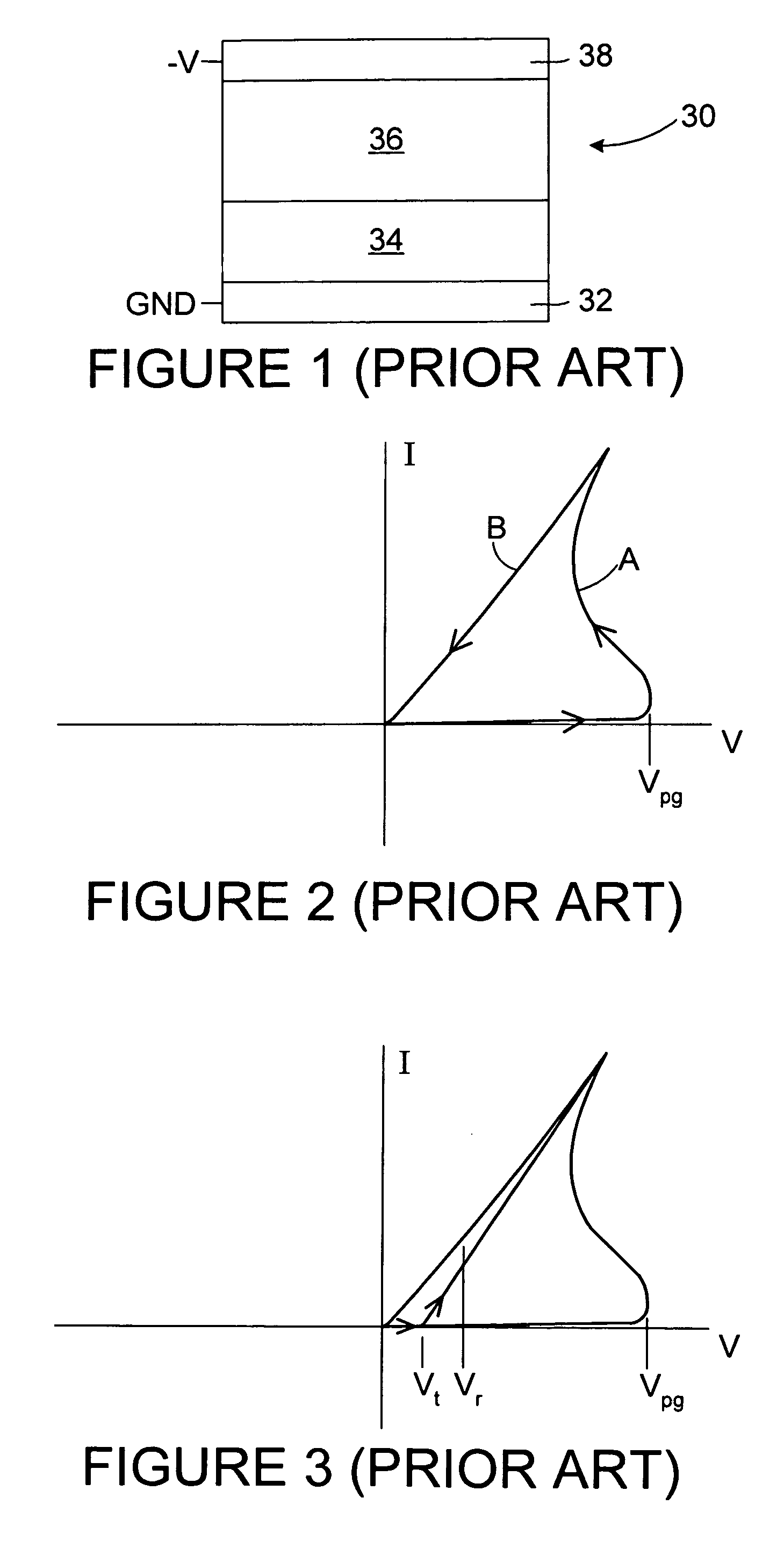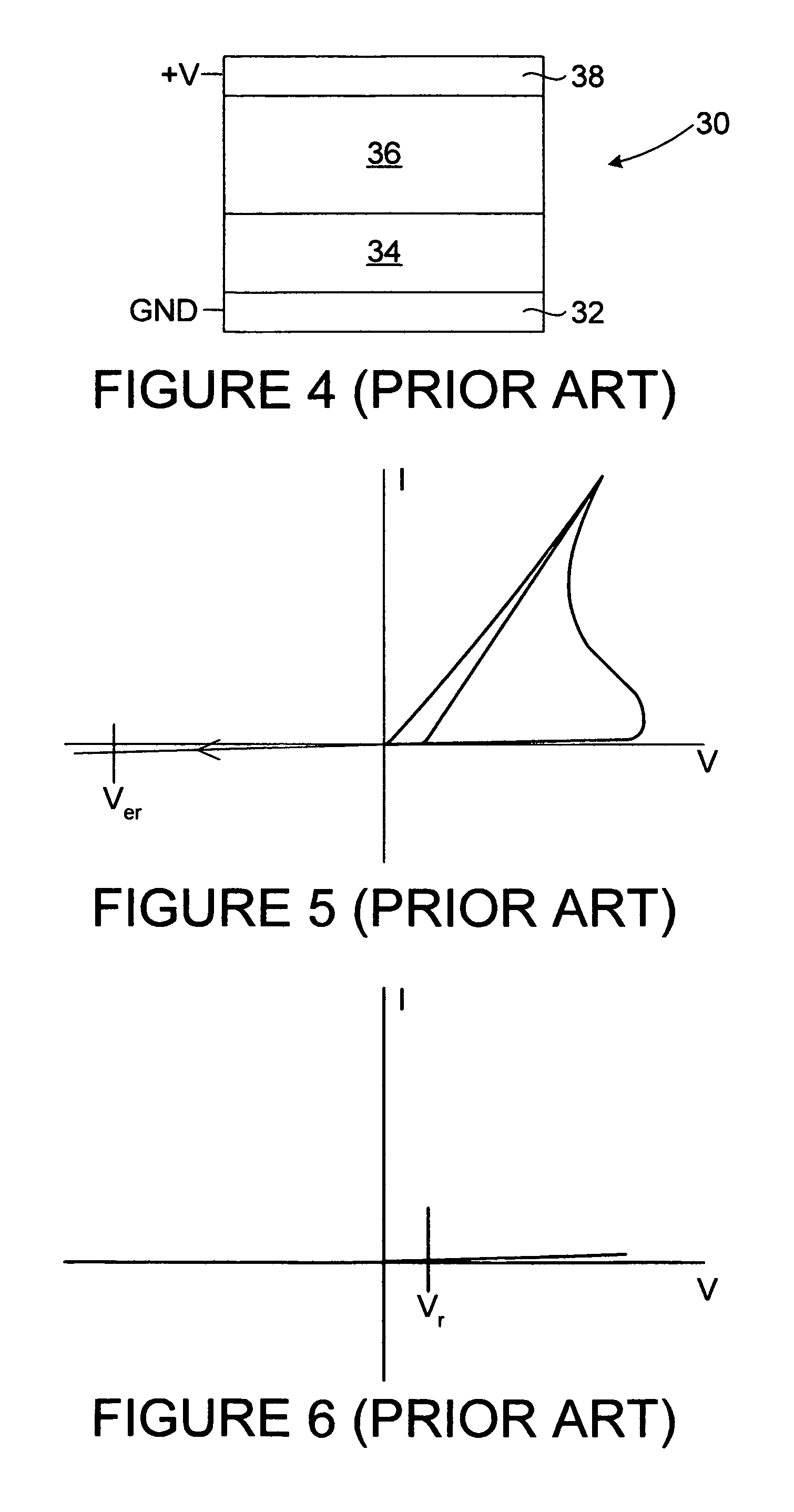Memory elements using organic active layer
a technology of active layer and memory element, applied in thermoelectric devices, instruments, nanoinformatics, etc., can solve the problems of volatile memory devices losing their information, slowing down faster than other types of storage devices, and increasing the volume, use and complexity of computers and electronic devices
- Summary
- Abstract
- Description
- Claims
- Application Information
AI Technical Summary
Problems solved by technology
Method used
Image
Examples
first embodiment
[0031]FIGS. 7–10 illustrate a process for fabricating memory element 130 in accordance with the present invention. Initially, an electrode 132 is formed on a substrate 134 (FIG. 7). The electrode 132 may be formed by any suitable technique, such as physical vapor deposition, i.e. PVD (such as thermal vacuum evaporation, e-beam deposition or sputtering), ion plating, chemical vapor deposition, i.e. CVD (such as metal-organic CVD, i.e. MOCVD), plasma-enhanced CVD, i.e. PECVD, and the like. The electrode 132 in this embodiment is copper, but it will be understood that the electrode 132 can be formed of any of a number of materials including aluminum, barium, calcium, chromium, cobalt, copper, germanium, gold, magnesium, manganese, molybdenum, indium, iron, nickel, palladium, platinum, ruthenium, samarium, silver, tantalum, titanium, tungsten, zinc, metal oxides, polysilicon, doped amorphous silicon, metal silicide, metal carbide, metal nitrides, magnesium-silver alloy, nickel-cobalt al...
second embodiment
[0044]FIG. 12 illustrates memory element 230. In this embodiment, again, an electrode 232 of, for example, copper is provided on, over and in contact with a substrate 234, a passive layer 236, for example, copper sulfide is provided on, over in contact with the electrode 232, an active layer 238 (approximately 700 angstroms thick) in the form of a polyfluorene layer is provided on, over and in contact with the passive layer 236, and an electrode 240 of, for example, titanium, is provided on, over and in contact with the polyfluorene layer 238, with the active and passive layers 238, 236 between the electrodes 232, 240. The memory element 230 takes the form of and is fabricated in the same manner as the memory element 130, described above. Again, arylenes can include heterocycles such as pyridine, bipyridine, quinoline, biquinoline, tepyridine, thiophene, bithiophene, and alkyl- or alkoxy-substituted derivatives thereof, which provide with the polyfluorene copolymer a polyfluorene he...
PUM
| Property | Measurement | Unit |
|---|---|---|
| Chemical structure | aaaaa | aaaaa |
Abstract
Description
Claims
Application Information
 Login to View More
Login to View More - R&D
- Intellectual Property
- Life Sciences
- Materials
- Tech Scout
- Unparalleled Data Quality
- Higher Quality Content
- 60% Fewer Hallucinations
Browse by: Latest US Patents, China's latest patents, Technical Efficacy Thesaurus, Application Domain, Technology Topic, Popular Technical Reports.
© 2025 PatSnap. All rights reserved.Legal|Privacy policy|Modern Slavery Act Transparency Statement|Sitemap|About US| Contact US: help@patsnap.com



